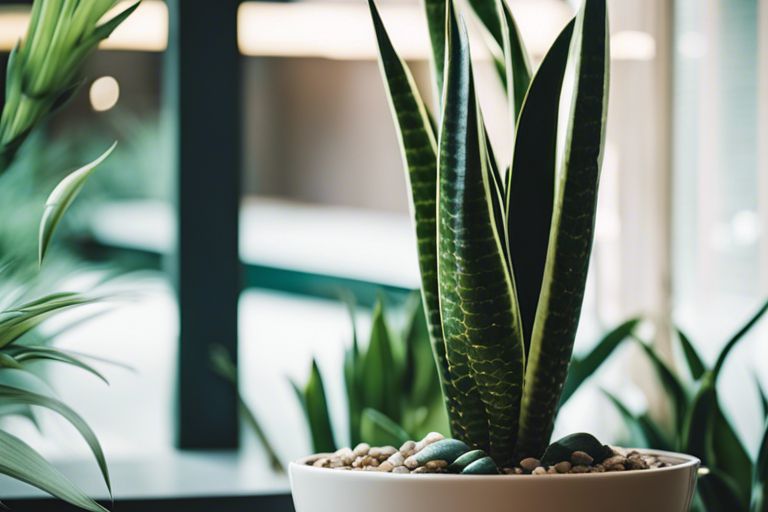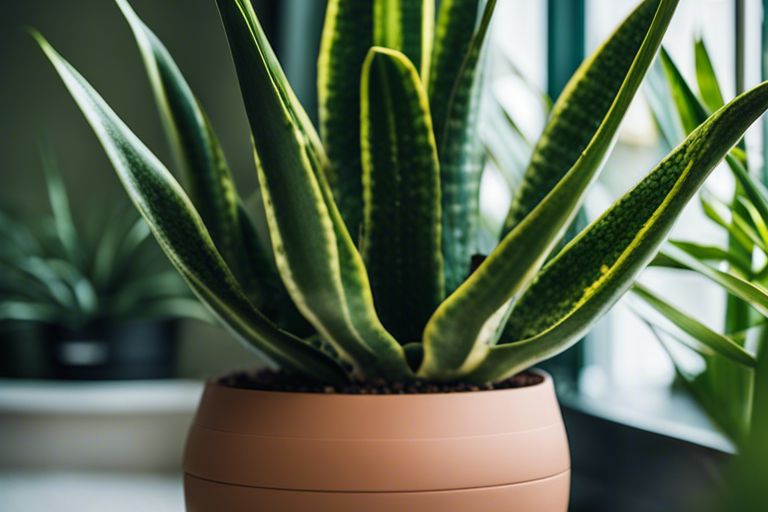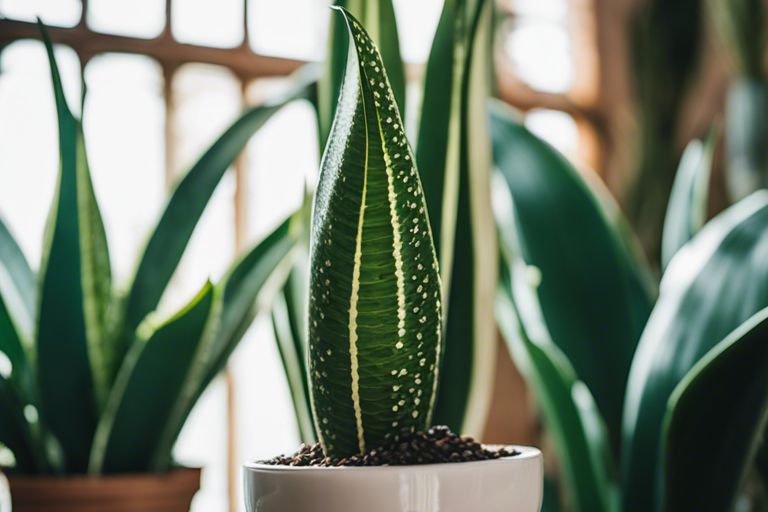Many indoor plant enthusiasts often wonder about the frequency of flowering in their snake plants, also known as Sansevieria. These popular houseplants are beloved for their striking appearance and minimal care requirements, but their flowering habits can be a source of confusion. Understanding the factors that influence flowering in snake plants can help plant owners better care for these unique succulents.
Key Takeaways:
- Snake plants (Sansevieria) flower rarely: In their natural habitat, snake plants rarely flower. Flowering is a sporadic occurrence and can be influenced by various factors such as age, health, and environmental conditions.
- Flowering is not important for snake plant health: While the appearance of flowers in snake plants can be a delight, they are not necessary for the overall health and well-being of the plant. Snake plants are primarily grown for their beautiful foliage.
- Optimal care can encourage flowering: Providing proper care including adequate lighting, watering, and occasionally fertilizing can increase the chances of a snake plant flowering. However, even with optimal care, flowering may still be unpredictable and infrequent.
Botanical Profile of Sansevieria
Species and Varieties
One of the most well-known plants in the Sansevieria genus is the Sansevieria trifasciata, commonly referred to as the Snake Plant or Mother-in-Law’s Tongue. There are over 70 other species within the Sansevieria genus, each with its own unique characteristics and appearances. Varieties of Sansevieria can vary in leaf pattern, size, and color, making them a popular choice for indoor plant enthusiasts.
Typical Growth Patterns and Characteristics
Characteristics of Sansevieria plants include their tough, sword-shaped leaves that are often variegated with shades of green, yellow, or silver. These succulent plants are known for their hardiness and ability to thrive in low light conditions, making them a favorite choice for beginners or those with less-than-ideal growing spaces. They are also known for their air-purifying qualities, helping to improve indoor air quality.
The growth pattern of Sansevieria is typically slow and steady, with new leaves emerging from the center of the plant and older leaves sometimes browning and dying off. They are low-maintenance plants that require minimal watering and can go extended periods without attention, making them an ideal choice for those with busy lifestyles.
The Phenomenon of Flowering in Snake Plants
Not all snake plants are known for their flowers. In fact, many snake plant owners may go years without ever seeing their plant bloom. While the absence of flowers is common, it does not mean these plants do not have the ability to produce them.
What Does a Snake Plant Flower Look Like?
Flowering in snake plants is a rare and exciting event. The flowers typically appear on long, slender stalks that emerge from the center of the plant. The flowers themselves are small and tubular, usually white or greenish-white in color. While they may not be as showy as flowers on other houseplants, they add a unique charm to the overall appearance of the snake plant.
How Often Do Snake Plants Flower?
Plant experts note that snake plants are notoriously slow to flower, with some specimens taking years to produce blooms. Factors such as age, size, and environmental conditions can influence the likelihood of flowering. While some snake plant owners may never witness their plant in bloom, others may be surprised by unexpected flowers after many years of care.
Snake plants are known for their resilience and ability to thrive in low-light conditions, making them popular choices for indoor spaces. While the flowering of snake plants may be rare, the appearance of flowers can be a rewarding and delightful experience for plant enthusiasts.
Factors Influencing Flowering in Sansevieria
Unlike many other houseplants, flowering in Sansevieria is a rare occurrence that is influenced by various factors. Understanding these factors can help plant owners maximize the chances of witnessing the elusive snake plant flower. Here, we probe into the key influences that determine when and if Sansevieria will bloom.
Environmental Triggers
An important factor that influences flowering in Sansevieria is the environment in which the plant is situated. Sansevieria prefers indirect sunlight and moderate temperatures to thrive. Sudden changes in temperature, prolonged exposure to direct sunlight, or extreme weather conditions can stress the plant, affecting its ability to produce flowers. Adequate humidity levels and well-draining soil are also crucial for promoting flowering in Sansevieria.
Plant Maturity and Health
Maturity and overall health play a significant role in the flowering capabilities of Sansevieria. A mature and healthy plant is more likely to allocate resources towards flowering compared to a younger or stressed plant. Ensuring that your snake plant is well-nourished, properly watered, and free from pests or diseases can increase the likelihood of seeing blooms.
Understanding the growth patterns of Sansevieria can provide insights into when the plant is most likely to flower. Generally, well-established snake plants that have reached a certain size and have been actively growing are more prone to producing flowers.
Seasonal Influences and Photoperiodism
An important consideration when trying to encourage flowering in Sansevieria is the influence of seasons and photoperiodism. Sansevieria may be more likely to flower during certain times of the year when day length and light exposure are optimal for bloom induction. Adjusting the light exposure and mimicking seasonal changes through controlled lighting can potentially trigger Sansevieria to produce flowers.
The flowering of Sansevieria is a complex process influenced by a combination of environmental, plant-specific, and seasonal factors. By understanding these influences and providing the right conditions, plant owners can enhance the chances of witnessing the rare and beautiful snake plant flowers.
Caring for a Flowering Snake Plant
Once again, witnessing a flowering snake plant is a rare but rewarding experience for plant enthusiasts. Understanding how to care for a flowering snake plant is necessary to ensure the plant thrives during and after the blooming period.
Optimal Conditions for Flower Induction
On the quest to encourage your snake plant to bloom, it’s vital to mimic its natural habitat as closely as possible. Snake plants thrive in indirect sunlight and temperatures ranging from 70-90°F. To induce flowering, ensure the plant receives a period of cool temperatures of 50-70°F at night for about 4-6 weeks. Additionally, providing well-draining soil and occasionally fertilizing with a balanced houseplant fertilizer can aid in flower development.
Post-Flowering Care and Maintenance
Plant care post-flowering is crucial to ensure the continued health of your snake plant. After the flowering period, focus on regular watering and maintaining moderate light conditions to allow the plant to recover. If your snake plant produced seeds after flowering, you can consider propagating them for new plants.
With proper care and attention, your flowering snake plant can continue to thrive and potentially bloom again in the future. Remember to remove any dead flowers or foliage promptly to promote new growth and keep your plant in optimal health.
Common Misconceptions about Sansevieria Flowering
Myths vs. Facts
All too often, there are misconceptions surrounding the flowering occurrences in Sansevieria plants, commonly known as Snake Plants. One common myth is that Snake Plants rarely flower. While it is true that they do not flower frequently, Sansevieria plants are capable of producing beautiful, fragrant flowers under the right conditions. Understanding the factors that influence flowering can help dispel this myth and encourage more blooms in your Snake Plant collection.
Misinterpretation of Flowering Signs
On the other hand, some plant enthusiasts misinterpret signs of flowering in Snake Plants, leading to misconceptions about their blooming habits. One common misinterpretation is mistaking new leaf growth for flower spikes. Flowering in Sansevieria plants is a rare occurrence, so it is crucial to understand the distinct characteristics of flower spikes versus new leaves to avoid confusion.
Facts: Flower spikes are thinner, taller, and appear different from new leaves. While both may emerge from the center of the plant, flower spikes typically have a different texture and form compared to foliage growth. Identifying these differences can help enthusiasts accurately recognize and appreciate the rare flowering events in their Snake Plants.
Scientific Perspectives on Flowering Events
Research on Flowering Patterns in Indoor Plants
To better understand the occurrence of flowering in snake plants, researchers have conducted studies on flowering patterns in indoor plants. Indoor environments present unique conditions that can influence the flowering of Sansevieria. Factors such as temperature, light exposure, and pot size have been identified as crucial elements that can impact the likelihood of flowering in snake plants.
The Role of Phytohormones in Flowering
One of the key factors influencing flowering events in snake plants is the role of phytohormones. One such hormone, ethylene, plays a significant role in the initiation of flowering in Sansevieria. Ethylene is a plant hormone responsible for various growth and developmental processes, including the regulation of flowering. Understanding the impact of phytohormones on flowering can provide insights into the mechanisms that trigger blooming in snake plants.
Flowering in snake plants is a complex process influenced by various environmental and physiological factors. By delving into the research on flowering patterns in indoor plants and exploring the role of phytohormones, we can gain a deeper understanding of the mechanisms that govern flowering events in Sansevieria.
Cultural and Historical Views on Snake Plant Flowers
Symbolism and Beliefs
Historically, snake plant flowers have carried various symbolic meanings in different cultures. In Chinese culture, the snake plant is associated with wealth, prosperity, and good luck. Its ability to thrive in challenging conditions is seen as a symbol of resilience and strength. In African cultures, the snake plant is believed to offer protection against evil spirits and negative energy. The tall, upright leaves are thought to ward off bad luck and bring positive energy into the home.
Flowering Sansevieria in Folklore and Tradition
Sansevieria, commonly known as the snake plant, has a long history of being revered in folklore and tradition. In some cultures, the flowering of the snake plant is considered an omen of good fortune and prosperity. It is believed that when the plant blooms, it brings blessings and abundance to the household. Additionally, the flowers of the snake plant are sometimes seen as a sign of impending danger or misfortune, serving as a warning to those who observe them.
Plus, snake plants are often included in feng shui practices for their ability to purify the air and create a harmonious environment. The positive energy they are said to bring aligns with their reputation for being low maintenance and easy to care for, making them a popular choice for homes and offices alike.
Final Words
Ultimately, understanding the flowering occurrences in Sansevieria, specifically the Snake Plant, sheds light on the rarity of their flowers. While Snake Plants do produce flowers, it is relatively uncommon for indoor plants to flower due to the specific conditions required for blooming. Factors such as maturity, environmental conditions, and species variation play crucial roles in determining when and if a Snake Plant will bloom. By being aware of these factors, snake plant enthusiasts can better appreciate and potentially encourage flowering in their beloved plants.
In short, while Snake Plant flowers may be considered rare, the beauty of these blooms is well worth the patience and effort required to cultivate them. With proper care and attention to the plant’s needs, there is a possibility of witnessing the captivating sight of Snake Plant flowers in full bloom. By understanding the flowering occurrences in Sansevieria, plant enthusiasts can deepen their appreciation for these unique and versatile houseplants.



